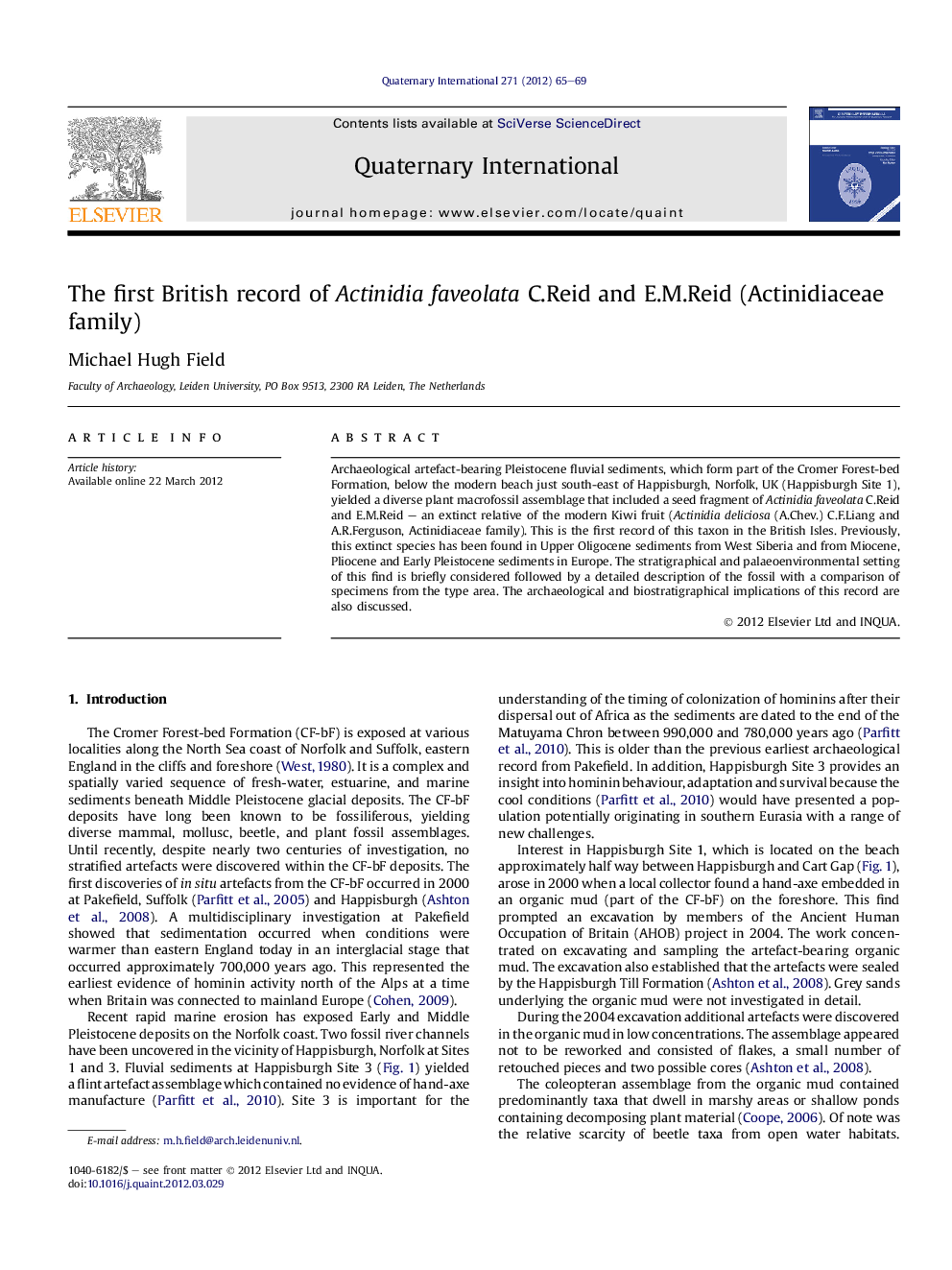| Article ID | Journal | Published Year | Pages | File Type |
|---|---|---|---|---|
| 1042691 | Quaternary International | 2012 | 5 Pages |
Archaeological artefact-bearing Pleistocene fluvial sediments, which form part of the Cromer Forest-bed Formation, below the modern beach just south-east of Happisburgh, Norfolk, UK (Happisburgh Site 1), yielded a diverse plant macrofossil assemblage that included a seed fragment of Actinidia faveolata C.Reid and E.M.Reid – an extinct relative of the modern Kiwi fruit (Actinidia deliciosa (A.Chev.) C.F.Liang and A.R.Ferguson, Actinidiaceae family). This is the first record of this taxon in the British Isles. Previously, this extinct species has been found in Upper Oligocene sediments from West Siberia and from Miocene, Pliocene and Early Pleistocene sediments in Europe. The stratigraphical and palaeoenvironmental setting of this find is briefly considered followed by a detailed description of the fossil with a comparison of specimens from the type area. The archaeological and biostratigraphical implications of this record are also discussed.
